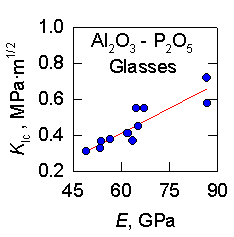A substantial effort has been made to select data for this database on the basis of sound scientific judgment. However, the National Institute of Standards and Technology (NIST) makes no warranties regarding its use, and NIST shall not be liable for any damage that may result from errors or omissions in the database.
Certain trade names and other commercial designations are used in this work for the purpose of clarity. In no case does such identification imply endorsement by the National Institute of Standards and Technology, nor does it imply that products or services so identified are necessarily the best available for the purpose.
How are data evaluated?
Scientific and technical data may be examined from three viewpoints:
The description of data generation is crucial. The identification and control of all relevant independent variables must be addressed and demonstrated. For mature areas such as thermodynamics and atomic physics, many measurement techniques are well characterized. In these cases, the adherence to physical laws and intercomparisons predominate. For areas in which behavior is not well understood, such as corrosion, data from different experiments are not usually comparable. Consequently, documentation of control of the experimental condition is most important.
Property Data Summaries are collections of property values derived from surveys of published data. These collections typically focus on either one material or one particular property. Studies of specific materials typically include thermal, mechanical, structural, and chemical properties, while studies of particular properties survey one property across many materials. The property values may be typical, evaluated, or validated. Values described as typical are derived from values for nominally similar materials.
CAUTION! Typical values are only representative of trends of values commonlyfound for a general class of materials and are not necessarily the best or most appropriate valuesfor any particular material.
The data evaluation levels used throughout the NIST Ceramics WebBook are:
Certain commercial equipment, instruments, or materials are identified in this document to specify adequately the experimental procedures and conditions. Such identification does not imply recommendation or endorsement by the National Institute of Standards and Technology, nor does it imply that the materials or equipment identified are necessarily the best available for the purpose.

NIST Standard Reference Database 137
A Computerized Fracture Mechanics Database for Oxide Glasses S.W.Freiman, T.L.Baker, and J.B.Wachtman, Jr. NBS Technical Note 1212 (National Bureau of Standards, 1985)
Availability: Superintendent of Documents U.S.Government Printing Office Washington, D.C. 20402
Other material collections: Property Data Summaries
Other materials: Oxide Glasses
Other Borate Glasses materials
Property Value Environment Notes --------------------------------- ----- ----------- -------------------------------------- Crack Growth Exponent [] .......: Elastic Modulus [GPa] ..........: 42.0 Air Young's Modulus is extrapolated. Fracture Energy [J/m2] ..........: 13.13 Air Notched beam Fracture Toughness [MPa m1/2].....: 1.05 Air Notched beam